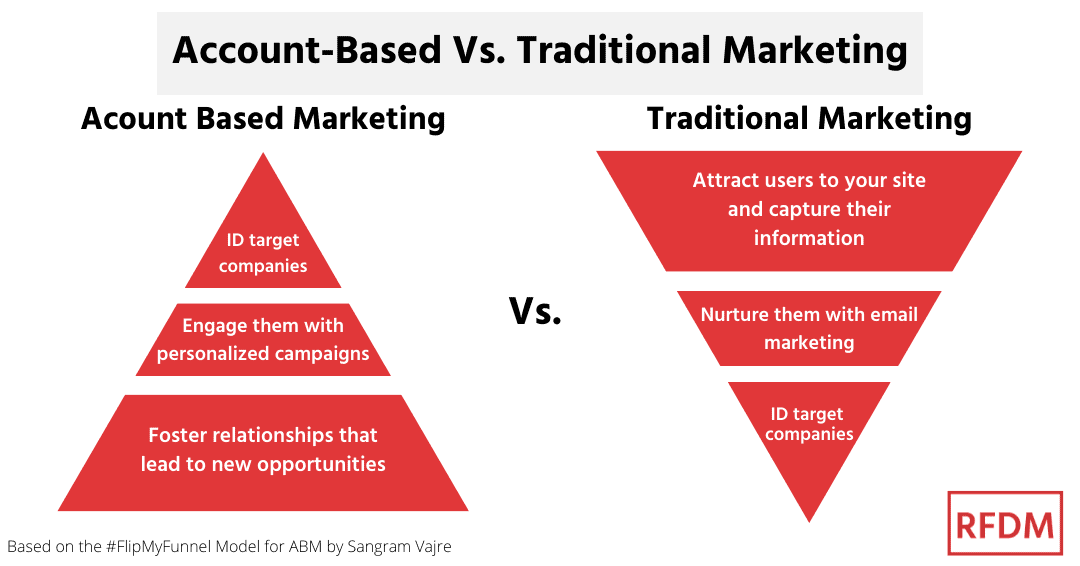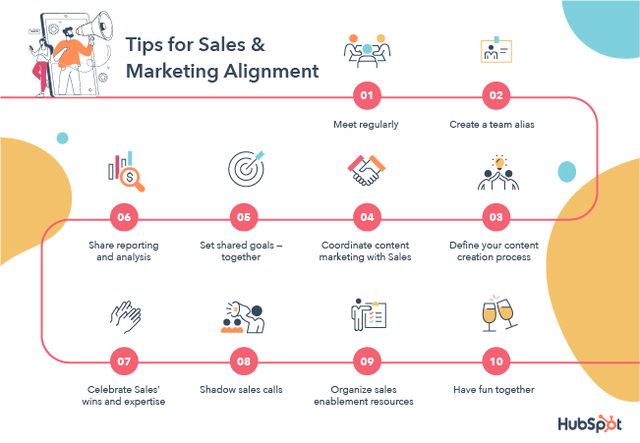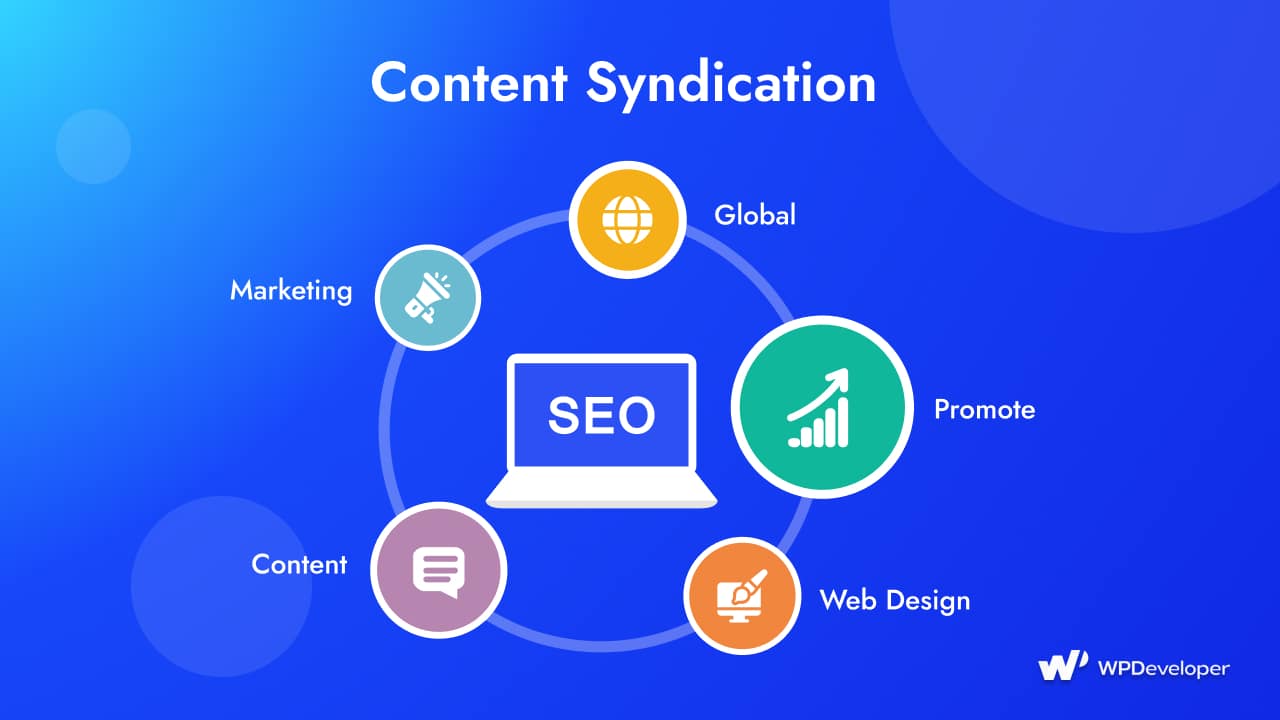Account-Based Marketing (ABM) is a highly focused strategy designed to target high-value accounts and engage their decision-making teams with personalised marketing content and direct communications. The core objective of ABM strategies is to drive sales revenue with speed and precision, ensuring that efforts are aligned with the most promising opportunities.
The Top 6 Benefits of Account-Based Marketing
1. Personalised Marketing
ABM allows your team to personalise every marketing touchpoint, tailored specifically to key contacts within target accounts. This level of personalisation ensures that prospects feel valued and engaged, while also receiving content that is highly relevant to their specific needs and roles.
By adopting ABM strategies, your marketing approach shifts from generic outreach to a tailored solution that empathises with your prospects’ challenges. Demonstrating that you understand their pain points and offering solutions builds trust and relevance. This cycle of insights allows for continuous optimisation of content, ensuring it remains impactful as your understanding of the account evolves.
The effectiveness of personalisation is supported by data: a study by CEB revealed that 40% of individual stakeholders are more inclined to purchase from vendors whose content was explicitly tailored to their needs, compared to those who received generic information.
2. Building and Nurturing Customer Relationships
ABM is not limited to attracting new prospects. It plays a critical role in nurturing and maintaining strong relationships with your existing customers. Establishing and maintaining close relationships with key accounts builds trust and positions your company as a trusted expert in the industries you serve.
As these relationships deepen over time, ABM-driven personalisation provides greater insight into customer behaviours and evolving needs, enabling your team to proactively address their future requirements. This relationship-building aspect is crucial for long-term account retention and growth.

3. Aligning Marketing and Sales Teams
One of the key advantages of ABM strategies is the alignment it fosters between marketing and sales teams. Both teams can collaborate to develop a scoring system and target specific accounts based on key criteria, such as the technology a company uses or their current spend in your industry.
This alignment ensures consistency in messaging, rooted in a shared understanding of two critical factors: 1) why particular targets were selected, and 2) the most effective way to engage them.
Aligning these teams allows for seamless cooperation, ensuring that both sales and marketing are focused on the same high-value accounts, enhancing the likelihood of success.

4. Accelerating Sales Cycles
ABM strategies empower your team to engage key decision-makers within high-potential accounts long before they ever enter the sales conversation. This early influence helps to guide the buying process, significantly shortening the sales cycle.
By prioritising resources and tailoring marketing to specific account scores, you’ll streamline the entire process. Personalised marketing, coupled with early engagement, ensures quicker decision-making and faster conversions. According to Salesforce’s State of Marketing report, the integration of ABM increased the likelihood of shared goals and metrics between sales and marketing teams from 52% to 87%, demonstrating its effectiveness in accelerating the sales cycle.
5. Clear and Trackable Results
Every marketing campaign should offer measurable results, and ABM makes this even more straightforward. With specific objectives for each targeted account, it becomes easier to assess the impact and determine whether your ABM initiatives delivered the desired outcomes. Once results are clear, evaluating the return on investment (ROI) becomes a simpler task, allowing you to refine and improve your strategy.
6. Higher ROI
When executed properly, ABM strategies provide a highly efficient and targeted marketing approach, reducing wasted resources and driving significant ROI improvements. This focused method leads to higher conversion rates, lower customer acquisition costs, and faster revenue growth.
Research from the ABM Leadership Alliance and ITSMA shows that 76% of marketers reported a higher ROI with ABM compared to any other marketing strategy in 2020. This makes ABM one of the most effective ways to deliver results in B2B marketing, particularly for businesses focused on high-value accounts.
How to Launch Your ABM Strategy
Step 1: Build the Case for Your Account-Based Marketing Plan
The foundation of a successful ABM strategy lies in how you position your plan. First and foremost, you’ll need to present ABM strategies as the key to achieving your organisation’s overarching business goals. Whether the objective is to move into higher-value markets, expand into new verticals, or grow SaaS revenue, aligning your ABM goals with these strategic objectives will be essential in securing internal buy-in.
There are two main ways you can approach this:
- Showcase the Revenue Potential of ABM
ABM strategies are renowned for their efficiency in driving revenue. Highlight three key advantages to demonstrate this:- Align sales and marketing teams: When both teams focus on the same high-priority target accounts, campaigns become more coordinated and are more likely to succeed.
- More efficient investment: ABM allows marketers to move away from the ‘spray and pray’ method by using data to prioritise target accounts. This ensures better budget allocation and a higher chance of success.
- Faster deal closure: A concentrated focus on target accounts leads to higher win rates and shorter sales cycles. According to SiriusDecisions, 80% of marketers reported higher win rates for ABM accounts.
- Link Business Goals to ABM Strategies
Tailor your approach to showcase how ABM directly supports the company’s larger business ambitions. Whether the goal is faster revenue growth or market expansion, ABM can accelerate the journey to success. This not only strengthens your case but also demonstrates a deep understanding of the organisation’s needs.
Step 2: Integrate Your ABM Plan with Your Demand Generation Strategy
For many B2B companies, demand generation is the lifeblood of their lead pipeline. Shifting focus towards ABM strategies may seem daunting at first, but it’s crucial to show how ABM and demand gen can work in harmony. By documenting this in an ABM account plan or strategy deck, you’ll have a clear roadmap that integrates both approaches.
ABM tends to rely more on outbound tactics, whereas traditional demand gen focuses on inbound. However, a hybrid approach can offer the best of both worlds, allowing your team to continue nurturing broader leads while focusing ABM resources on high-value accounts.
Step 3: Define Your Target Audience Across the Entire ABM Strategy
Precision in targeting is essential for ABM strategies, so it’s vital to clearly define and segment your audience. Here’s how to break down your audience effectively:
- Ideal Customer Profile (ICP): This represents the key firmographic and technographic attributes that define your most valuable customer accounts.
- Target Account List (TAL): Focus on accounts that show the highest probability of converting, based on shared attributes from your ICP.
- Prioritised Account List: Use data on fit, intent, and engagement to prioritise the accounts that show the strongest signals for readiness to purchase.
- Buying Committees: Ensure that you’re reaching key decision-makers, influencers, and end-users within each target account.
Defining Your Ideal Customer Profile (ICP)
Your ICP should be built around the characteristics most relevant to your business. This could include:
- Company size
- Industry vertical(s)
- Revenue
- Geographic location
- Technographics (technology usage)
Building Your Target Account List (TAL)
If you don’t already have a target account list, start by identifying accounts in your existing database that align with your ICP. You can also:
- Leverage vendor data to bring in new accounts based on fit and intent.
- Collaborate with sales teams to assess account quality and develop a preliminary account tiering system.
- Use machine learning and predictive models to further refine and score your account list.
If your TAL is already established, ensure you can articulate how the list was developed and, if possible, include account tiering to show which accounts hold the highest value.
Step 4: Outline Your ABM Project Plan and Programme Initiatives
Now it’s time to detail how you’ll execute your ABM strategy across various channels. The first step is to define all the channels and vendors you’ll use to engage your target accounts. This could include:
- Direct mail and gifting
- Digital ads
- Web personalisation
- Sales outreach syndication
- Content syndication
- Email and chat
Each of these channels plays a key role in ensuring ABM strategies remain dynamic, multi-faceted, and highly targeted.

Set Goals by Funnel Stage
For each funnel stage, clearly define your ABM goals, messaging, KPIs, and budget allocation. For example:
- Awareness Stage: Create top-of-funnel (ToFu) programmes aimed at generating interest among key accounts, measuring KPIs such as content engagement and ad impressions.
Leverage the RollWorks Command Centre
To keep track of your ABM initiatives, consider using an integrated tool like the RollWorks Command Centre. This platform helps streamline your efforts by:
- Providing real-time insights across channels.
- Coordinating multi-channel campaigns from a single dashboard to ensure consistent messaging.
- Optimising resources with advanced analytics to maximise ROI.
Step 5: Measuring and Analysing ABM Performance
No ABM strategy is flawless from the outset, which makes ongoing measurement and analysis critical for optimising performance and increasing ROI. Here are the key metrics you should track:
- Engagement metrics: This includes social media engagement, email opens, content downloads, and form submissions.
- Profit metrics: Track conversion rates, average deal size, cross-sell and upsell opportunities, and total revenue generated.
- Retention metrics: Focus on Customer Satisfaction Scores (CSAT), Net Promoter Scores (NPS), and Customer Lifetime Value (LTV).
In most cases, ABM software and CRM solutions can be configured to provide the reporting and insights needed to fine-tune your ABM strategy.
Scaling Your ABM Strategy: A Step-by-Step Approach
1) Evaluating Your TAM and ICP for Scalability
To expand ABM strategies effectively, it’s essential to begin with a clear understanding of how to segment both your Total Addressable Market (TAM) and Ideal Customer Profile (ICP). Utilising advanced, data-centric methods to define these key elements is the cornerstone of a scalable approach.
What is TAM?
TAM, or Total Addressable Market, is the complete pool of potential clients your business could target with its products or services. It represents the full revenue opportunity within your reach. However, TAM is not limitless—there’s a ceiling to how much revenue your business can capture over a given time period. Acknowledging these limitations is vital when you’re looking to scale. It allows you to focus on the most promising segments, driving targeted growth within your market.
What is an ICP?
Your Ideal Customer Profile (ICP) outlines the characteristics of the accounts that are most suited to your offering. These characteristics include firmographics, such as industry sector, company size, geographical location, and revenue—business equivalents of demographics. In addition, technographics, or the technologies these companies are using, are also key to identifying potential. A well-defined ICP ensures that your ABM strategies are tailored to reach high-potential accounts, maximising return on investment.
2) Prioritising Accounts Through Fit, Intent, and Engagement Metrics
Once your TAM and ICP are well defined, the next step in scaling ABM strategies is prioritising accounts based on a combination of fit, intent, and engagement data. This step allows you to direct your efforts toward those accounts most likely to engage with your offering.
Multiple platforms provide insight into intent data, with key players like Bombora and G2 Crowd leading the charge. Bombora uses a collaborative, privacy-compliant data pool (aligned with GDPR and CCPA) that employs machine learning to track when target businesses display buying behaviours—such as consuming industry-specific content or visiting particular types of web pages.
Similarly, G2 Crowd offers insight by tracking when businesses are actively researching your products or those of your competitors. This data is crucial for scaling your ABM strategies, as it helps ensure your efforts are targeted at accounts that are already engaging with your market.
It’s worth noting that some forms of intent data, such as bidstream, can be less reliable. Bidstream data, which tracks keywords through ad pixels, is not always compliant with privacy regulations like GDPR and does not provide deep behavioural insights. This makes it a less precise tool for targeting in ABM.
By combining data on fit, intent, and engagement, your marketing and sales teams can target accounts that are actively seeking solutions, improving the efficiency of your efforts. This reduces the chance of wasting resources on accounts that don’t align with your business goals, allowing you to focus on high-value prospects.
3) Make Your ABM Programme Modular
Sales and marketing alignment is the backbone of any successful ABM strategy, but this coordination can be difficult to achieve without a clear process. To simplify this, consider making your ABM programme modular, allowing both teams to operate within a structured yet flexible framework.
A modular approach lets your sales team ‘order’ marketing programmes via a CRM-integrated workflow. Before each campaign, sales can select from a pre-approved menu of actions tailored to account tiers. Think of it like choosing from a dim sum menu, but for ABM strategies.
For example, the menu could include options like direct mail, dimensional mailers (such as sending personalised popcorn or bespoke ice cream packages), custom display creatives, or targeted content. Marketing then executes these actions in a timely and coordinated fashion.
Tools like Sendoso enable this approach, offering various options for personalised mailers that can be deployed based on account tier. By offering a modular menu, you not only improve sales and marketing alignment but also tailor your efforts to each account’s specific needs and potential.
In fact, Thomson Reuters achieved a 95% win rate by implementing a tiered ABM strategy, as documented in a Terminus ABM case study. By tiering their accounts and offering customised programmes for each level, they were able to dramatically increase their win rate and maximise the effectiveness of their ABM strategies.







